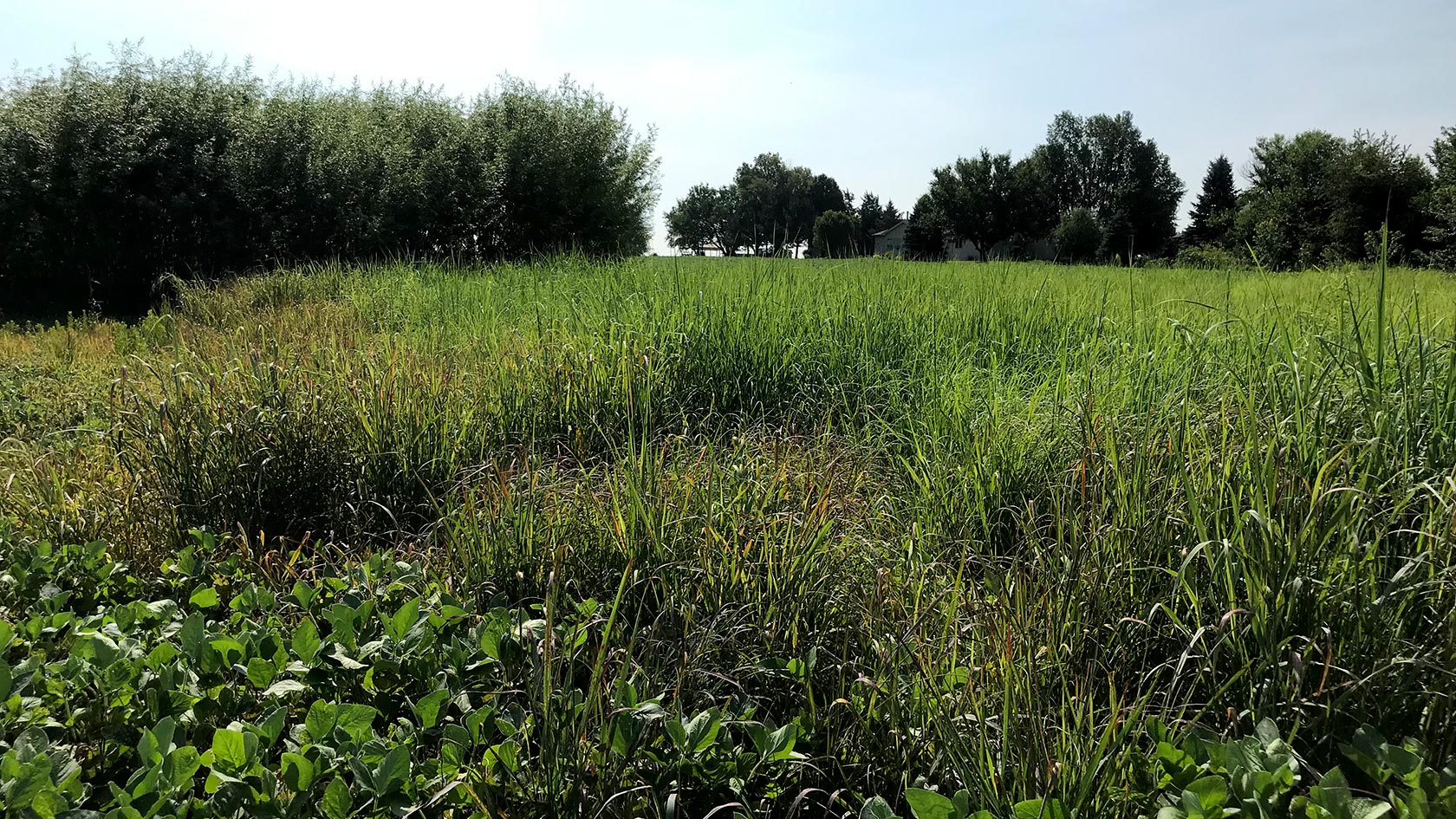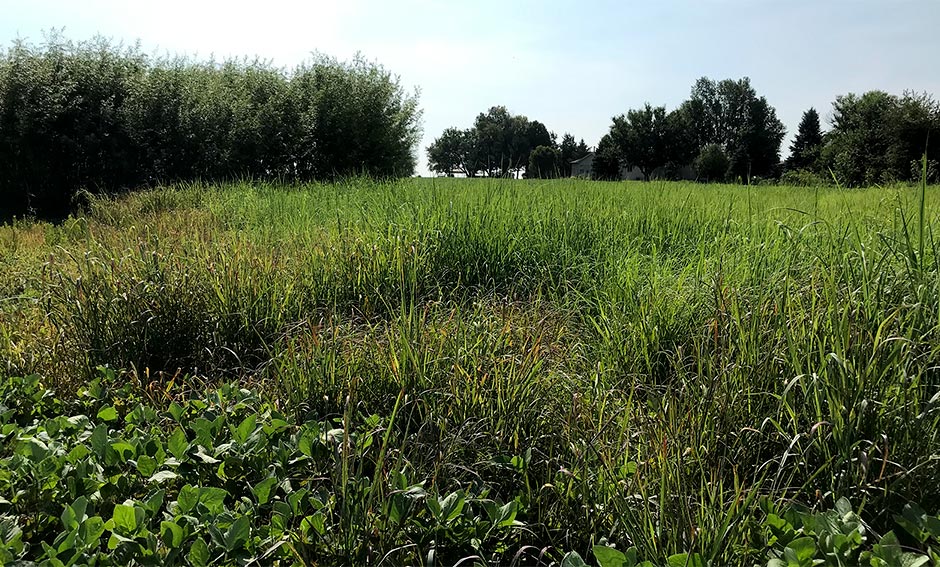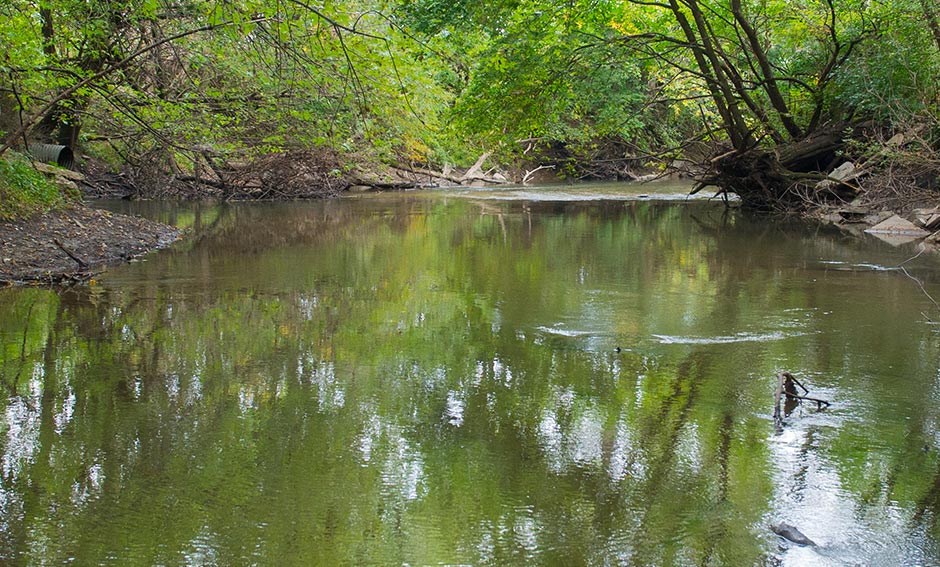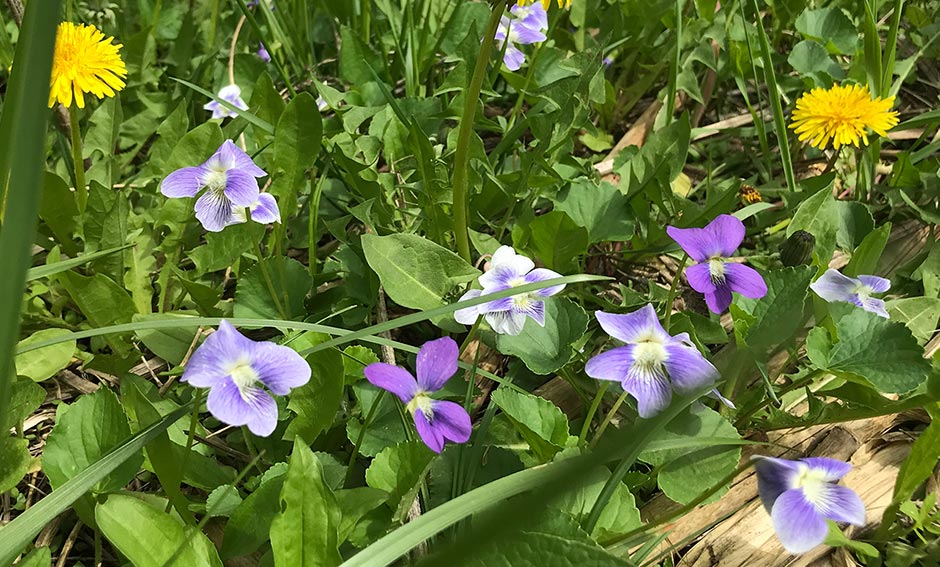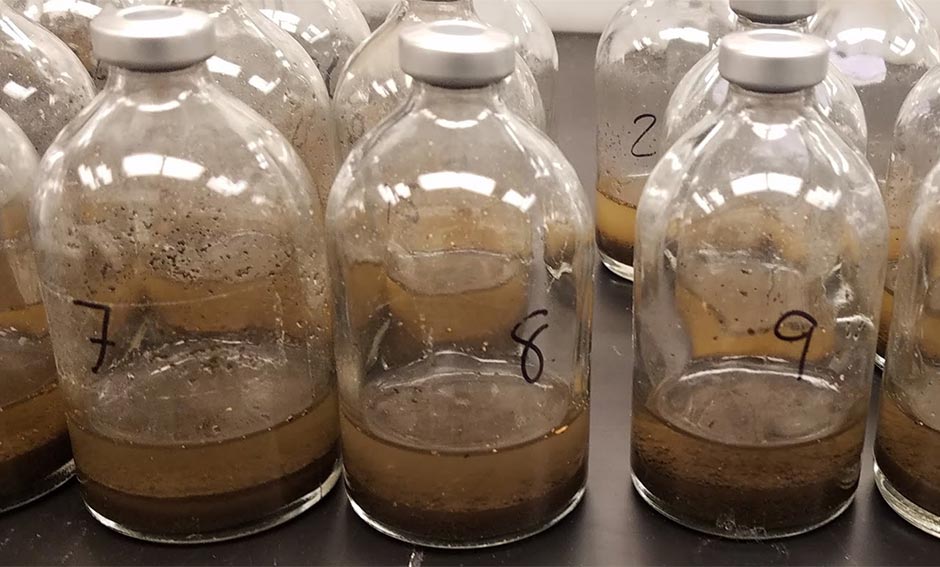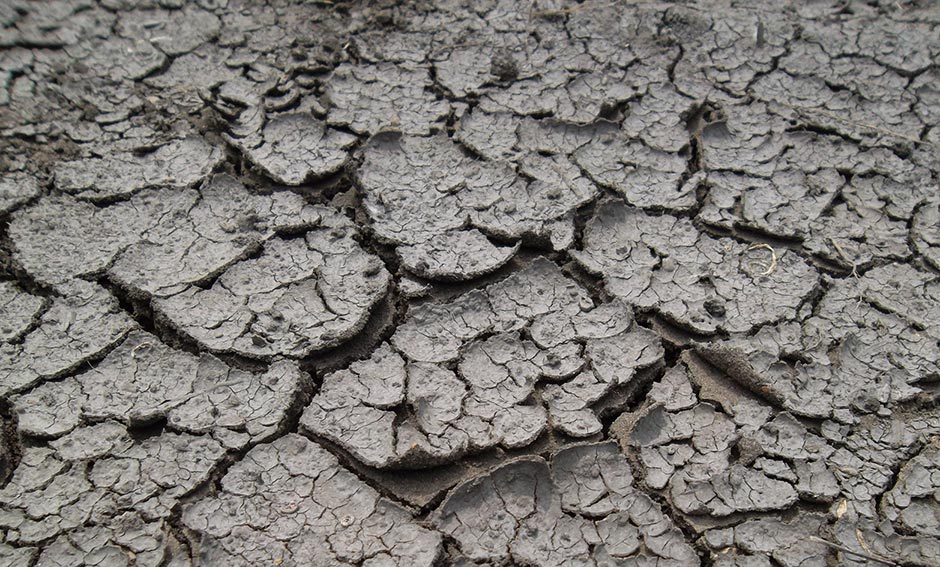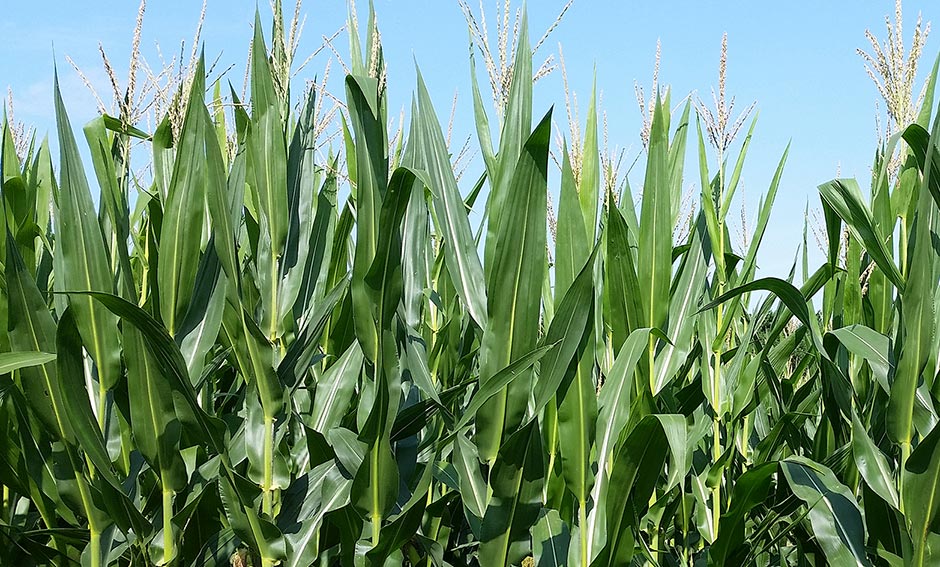Loading...
Ecosystem Services and Biomass Feedstock
Converting monocultural agricultural landscapes into multi-functional with perennial bioenergy crops for added ecosystem and economic benefits
Predicting Biomass Yields of Advanced Switchgrass Cultivars for Bioenergy and Ecosystem Services Using Machine Learning
- Cacho, J.F., J. Feinstein, C.R. Zumpf, Y. Hamada, D.L. Lee, N.L., Namoi, D.K. Lee, N.N. Boersma, E.A. Heaton, J.J. Quinn, and M.C. Negri, 2023, Predicting Biomass Yields of Advanced Switchgrass Cultivars for Bioenergy and Ecosystem Services Using Machine Learning: Energies (16) 4168. https://doi.org/10.3390/en16104168
- Evaluates the accuracy of using machine learning (ML) algorithms for predicting the biomass yield of advanced switchgrass cultivars.
- Determines the most important biomass yield predictors for switchgrass grown on marginal land.
- Temperature, precipitation, field slope and elevation were found to be top yield predictors.
- This study helps pave the way for applying ML as a management tool for alternative bioenergy landscapes.
Perennializing marginal croplands: going back to the future to mitigate climate change with resilient biobased feedstocks
- Ramirez, S., M.R. Schmer, V.L. Jin, R.B. Mitchell, C. Stewart, J. Parsons, D. Redfearn, J. Quinn, G.E. Varvel, K.P. Vogel, R.F. Follet, 2024, Perennializing marginal croplands: going back to the future to mitigate climate change with resilient biobased feedstocks: Frontiers in Energy Research. https://doi.org/10.3389/fenrg.2023.1272877
- Long-term study comparing corn and perennial bioenergy crops in Nebraska.
- Switchgrass found to be more reliable and sustainable than corn as a bioenergy feedstock.
- First-ever literature example of SUPERBEEST.
Estimating Field-Level Perennial Bioenergy Grass Biomass Yields Using Normalized Difference Red-Edge Index and Linear Regression Analysis for Central Virginia, USA
- Hamada, Y., C. Zumpf, J. Quinn, and M.C. Negri, 2023, Estimating Field-Level Perennial Bioenergy Grass Biomass Yields Using Normalized Difference Red-Edge Index and Linear Regression Analysis for Central Virginia, USA: Energies 16, 7397. https://doi.org/10.3390/en16217397
- Estimation of perennial bioenergy grass yields in central Virginia, USA, at a field level using the normalized difference red-edge index calculated from satellite imagery.
- The index around mid-August was a strong indicator of field-level biomass yields where perennial bioenergy grasses are uniform across sites.
- Estimating biomass yields using a single regression model could be successful for sites growing uniform grass types but it would be uncertain across sites growing varying grass types.
Predicting Switchgrass Biomass Yields Using a Spectral Vegetation Index Derived from Multispectral Satellite Imagery
- Hamada, Y., C.R. Zumpf, and J.J. Quinn, 2022, Predicting Switchgrass Biomass Yields Using a Spectral Vegetation Index Derived from Multispectral Satellite Imagery: Argonne Technical Report ANL/EVS-23/20, 35 pp. https://publications.anl.gov/anlpubs/2023/07/178961.pdf
- A comparative study of 30 spectral vegetation indices calculated from satellite imagery for estimating switchgrass biomass yields at harvest in central Virginia.
- Indices using bands sensitive to plant chlorophyll and/or nitrogen contents showed the highest indicative power followed by those using bands sensitive to plant moisture, cellulose, and lignin contents.
Land Use for Bioenergy: Synergies and Trade-offs Between Sustainable Development Goals
- Vera, I., B. Wicke, P. Lamers, A. Cowie, A. Repo, B. Heukels, C. Zumpf, D. Styles, E. Parish, F. Cherubini, G. Berndes, H. Jager, L. Schiesari, M. Junginger, M. Brandao, N.S. Bentsen, V. Daioglou, Z. Harris, and F. van der Hilst, 2022, Land use for bioenergy: Synergies and trade-offs between sustainable development goals: Renewable and Sustainable Energy Reviews (161) 112409. https://doi.org/10.1016/j.rser.2022.112409
- A literature review evaluating the synergies and tradeoffs of growing dedicated bioenergy crops to reduce greenhouse gas emissions (GHGs) and other United Nations Sustainable Development Goals (SDGs).
- SDGs that were found to synergize with reduced GHG emissions from bioenergy crop production were related to water quality, soil quality, and biodiversity conservation benefits, while tradeoffs were related to water availability, food security and revenue.
- The sustainability of bioenergy production systems depends on identifying context-specific conditions (i.e. land-use transitions and feedstock types) that can maximize synergies while minimizing trade-offs.
Remote Sensing-Based Estimation of Advanced Perennial Grass Biomass Yields for Bioenergy
- Hamada, Y., C.R. Zumpf, J.F. Cacho, D. Lee, C.-H. Lin, A. Boe, E. Heaton, R. Mitchell, M.C. Negri, 2021, Remote Sensing-Based Estimation of Advanced Perennial Grass Biomass Yields for Bioenergy: Land (10)1221. https://doi.org/10.3390/land10111221
- Developed and tested method for predicting switchgrass biomass yield based on remote sensing (Sentinel-2) imagery.
- Midsummer imagery analysis gave strong predictive results at five switchgrass sites across the Midwest.
Bio-Restore Workshop Summary Report
- U.S. DOE, 2020, Bio-Restore Workshop Summary Report, Argonne National Laboratory, September 25–26, 2019. Office of Energy Efficiency and Renewable Energy, Bioenergy Technologies Office, Report No.: DOE/EE–2043, 35 pp.
- Argonne hosted BETO conference focused on ecosystem services, attended by national labs, industry, academia, and others.
- Argonne served as lead compiler of participant input on terrestrial biomass sections, and author of introduction and conclusions.
Positive water linkages of producing short rotation poplars and willows for bioenergy and phytotechnologies
- Zalesny, R.S., G. Berndes, I. Dimitriou, U. Fritsche, C. Miller, M. Eisenbies, S. Ghezehei, D. Hazel, W.L. Headlee, B. Mola-Yudego, M.C. Negri, E.G. Nichols, J. Quinn, S.D. Shifflett, O. Therasme, T.A. Volk, and C.R. Zumpf, 2019, Positive water linkages of producing short rotation poplars and willows for bioenergy and phytotechnologies: WIREs Energy and Environment, e245, 20 pp. https://doi.org/10.1002/wene.345
- Short-rotation woody crops (poplar and willow) can provide biomass feedstock and/or phytoremediation of groundwater and soil.
- Team contributed case studies of willow for biomass and ecosystem services, and poplar and willow for phytoremediation of industrial contamination of groundwater.
Lignocellulosic Crops in Agricultural Landscapes: Production systems for biomass and other environmental benefits – examples, incentives, and barriers
- Dimitriou, I., G. Berndes, O. Englund, M. Brown, G. Busch, V. Dale, G. Devlin, B. English, K. Goss, S. Jackson, K.L. Kline, K. McDonnell, J. McGrath, B. Mola-Yudego, F. Murphy, M.C. Negri, E.S. Parish, H. Ssegane, and D. Tyler, 2018, Lignocellulosic Crops in Agricultural Landscapes: Production systems for biomass and other environmental benefits - examples, incentives, and barriers: IEA Bioenergy Task 43, 28 pp. http://task43.ieabioenergy.com/publications/lignocellulosic-crops-in-agricultural-landscapes.
- International review paper highlighting biomass production and associated environmental benefits.
- Team provided a description of perennial bioenergy crops as buffers to intercept nutrients.
- Buffers not only in riparian areas, but also contour buffers in environmentally vulnerable areas.
Status and prospects for renewable energy using wood pellets from the southeastern United States
- Dale V.H., K.L. Kline, E.S. Parish, A.L. Cowie, R. Emory, R.W. Malmsheimer, R. Slade, C.T. Smith, T.B. Wigley, N.S. Bentsen, G. Berndes, P. Bernier, M. Brandão, H. Chum, R. Diaz-Chavez, G. Egnell, L. Gustavsson, J. Schweinle, I. Stupak, P. Trianosky, A. Walter, C. Whittaker, M. Brown, G. Chescheir, I. Dimitriou, C. Donnison, A. Goss Eng, K.P. Hoyt, J.C. Jenkins, K. Johnson, C.A. Levesque, V. Lockhart, M.C. Negri, J.E. Nettles, and M. Wellisch, 2017, Status and prospects for renewable energy using wood pellets from the southeastern United States. Global Change Biology Bioenergy: GCB Bioenergy 9(8) 1296-1305. https://doi.org/10.1111/gcbb.12445
- Review of forestry management and impact of wood pellet industry in the southeastern U.S.
- Current wood-pellet production and anticipated future management approach are expected to have a benign effect on forest ecosystem services.
Bioenergy crops: delivering more than energy
- Negri, M.C. and H. Ssegane, 2016, Bioenergy crops: delivering more than energy. In “Commercializing Biobased Products”. Green Chemistry Series, S. Snyder, Editor, Royal Society of Chemistry, Cambridge, UK, p. 25-47. https://books.rsc.org/books/edited-volume/528/chapter-abstract/170377/Bioenergy-Crops-Delivering-More-Than-Energy?redirectedFrom=fulltext
- In-depth review of the numerous ecosystem services that can be provided by perennial bioenergy crops.
- Included aspects of soil quality, water use and quality, climate adaption, biodiversity, and pest suppression.
- Highlighted importance of landscape design.
Willow Buffers in Agricultural Systems: Linking Bioenergy Production and Ecosystem Services
- Zumpf, C., M.C. Negri, J. Quinn, P. Campbell, J. Cacho, P. Townsend, and L. Boby, 2018, Willow Buffers in Agricultural Systems: Linking Bioenergy Production and Ecosystem Services. Washington State University Extension Publication TB55E, https://pubs.extension.wsu.edu/integrating-willow-buffers-into-an-agricultural-landscape-linking-bioenergy-production-and-ecosystem-servicesenvironmental-applications-for-poplarwillow-road-map-em115e
- Case study on the use of shrub willow as buffers in Fairbury, IL with an overview of the previous published work and new data on ecosystem service provision by the willows.
- Assessment of nitrate leaching reduction, nitrous oxide emission reduction, and improvement in soil health.
